Ever looked at your feline friend and thought 'My home feels cramped for them'?
Our cats might not communicate it, but they crave more space. From sprawling savannahs to leafy forests, cats in the wild enjoy vast territories.
Yet, our indoor felines have only a few rooms at best. With most of us deciding to keep our cats indoors, ensuring their happiness and health means reimagining their living space - right within our homes.
It might sound like a tough task, but here's the twist. Cats perceive space differently than us, offering us a unique way to transform our homes.
This article will take you on a surprising journey of rethinking space, explaining why our cats need more room, and offering practical solutions to make your home feel larger and more exciting - at least for your cats! Let's find out how!
Understanding Your Indoor Cat's Need for More Space
The cats that share our lives and homes need large and stimulating territories. Even while confining our cats to live indoors only, we can and should offer them as much space as we can to encourage exercise and prevent boredom.
Regardless of your home's floor space, there are ways for you to increase Kitty's living space.
The lives of pet cats in the Western world have changed dramatically over the past few decades as more owners than ever choose to keep their cats indoors only.
Cats that never go outside are protected from the dangers of car accidents, predators, dogs, and malevolent humans. They also have a far lower risk of catching diseases from other cats or becoming injured in catfights.
The pesky toll of parasites, such as ticks, fleas, and worms, is also avoided in a cat that never goes outside. All in all, living indoors only offers cats a longer and much safer life.
As if these advantages were not enough, keeping our pet cats inside also makes environmental sense. Cats are efficient predators and when allowed to go outside they are likely to follow their instincts and hunt small mammals, reptiles, and birds.
In some areas, this can have a significant negative impact on local wildlife. Our pet cats are not part of the local ecological system, and it's our responsibility to reduce their effect on local wildlife, just like we try to reduce our own carbon print.
What's more, hunting puts your cat - and ultimately yourself - at risk for infections from salmonella, toxoplasmosis, and other diseases.
So, Does Keeping Cats Indoors Only Sound Perfect?
It's never that simple, is it?
Confining the cat to a limited space brings its own risks, albeit less significant ones: boredom and developing a sedentary lifestyle.
Our cats evolved to require a certain amount of exercise and stimuli. They should have enough things to stalk and "hunt" just like they would outside.
Fortunately, there's no need to bring live mice or lizards into our homes. Cat toys and some interactive playtime are enough to satisfy the hunting cravings of most cats.
Read this guide to learn how to create the perfect "hunt simulator" at home: Playing with Your Cat: 10 Things You Need To Know
Read more here for cat-toys
The Importance of Physical Activity and Territory
Physical activity is also important. Cats need a space that's large enough to encourage them to move around. That movement comes from the innate need to patrol their territory, so the larger the territory, the more exercise your cat gets.
In one study, researchers from the University of Illinois used radio transmitters to track the movement of cats who were let outside.
They found that the average pet cat patrolled a territory of about 4.9 acres. That's more than 213,000 square feet - about 100 times larger than the average American home.
So, if cats prefer to roam across acres of land, does that mean we should let them go outside? Not necessarily. As noted before, wandering outside is certainly dangerous for our kitties.
Depending on where you live, letting a cat go outside unsupervised can be anything between potentially harmful to incredibly dangerous.
The point we're trying to make here is that you should keep your cat indoors, yet be aware of the cat's innate needs and try to create more space for your cat within the walls of your home.
Sounds crazy, right?
How can you add more room when you have limited floor space?
Leveraging Vertical Space: A Game-Changer for Indoor Cats
Let's try and look at the world from a cat's perspective. Imagine that you're about a foot high and can jump and climb really well. Now take a look at your home from that feline perspective.
See how much-unused space there is around you?
Cats thrive on climbing and jumping and can really make the most of all that unused vertical space. Making the most of height, you can create paths that add a sense of distance for Kitty, without ever leaving the confines of your home.
As far as your cat is concerned, you can make your home much larger without adding any floor space.
Check out these photos and prepare yourself to be inspired.
These people created mazes of intricate catwalks and paths constructed within ordinary homes (And keep reading for practical tips for making the most of the vertical space in your own home!)
Idea #1: Cat Towers
Cat towers, or cat trees, are perfect for a feline-friendly home. They offer cats an opportunity to scratch, climb, play, and rest, all in one place.
Providing your cat with a cat tower not only boosts their mental stimulation and physical exercise but also satisfies their instinct to climb and survey their domain.
When selecting a cat tower, consider its stability, material, and the variety of activities it supports.
Read more here: Cat Trees: 10 Designs That Will Make You Go “wow!”
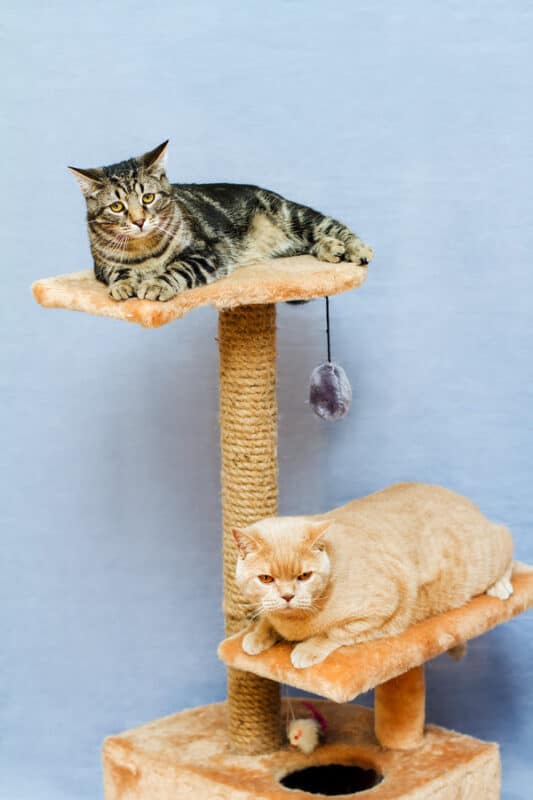
Idea #2: Cat Shelves
No place for a cat tree? Shelves take up zero floor space, and cats enjoy jumping from one shelf to the next. All you need to do is make sure the shelves are not too far apart from one another, and of course, keep them clear of any items that your cat may knock over.
Here are a few examples, shared by our members in the cat forums -
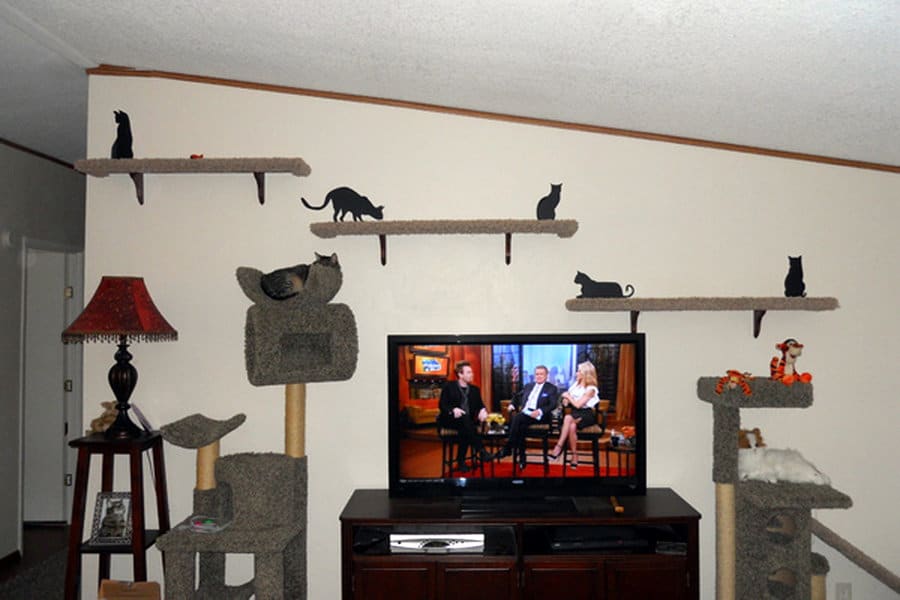
Photo Shared by Pattiwatti
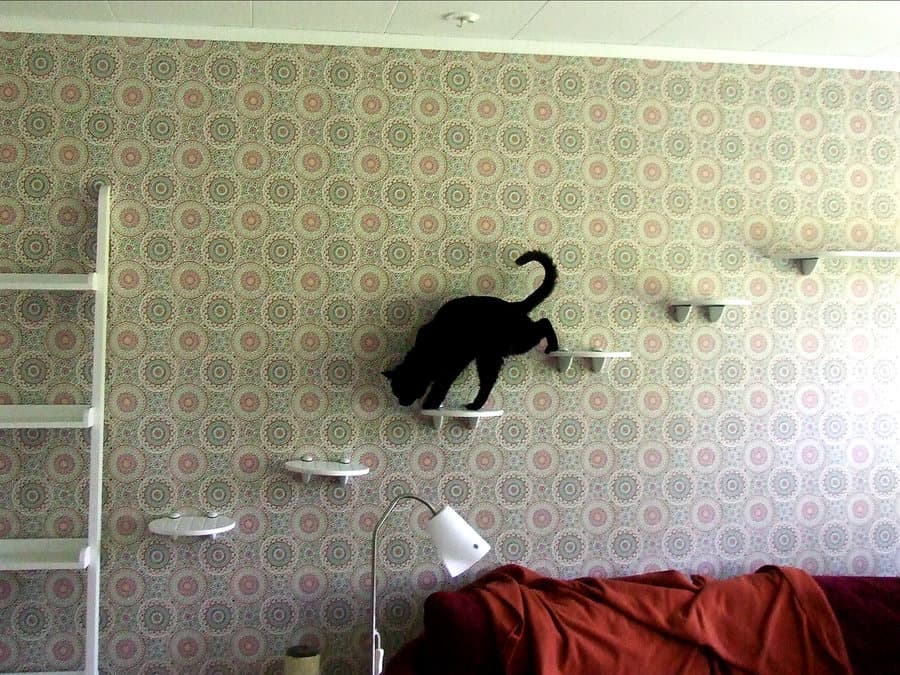
Shared by cicoccabim
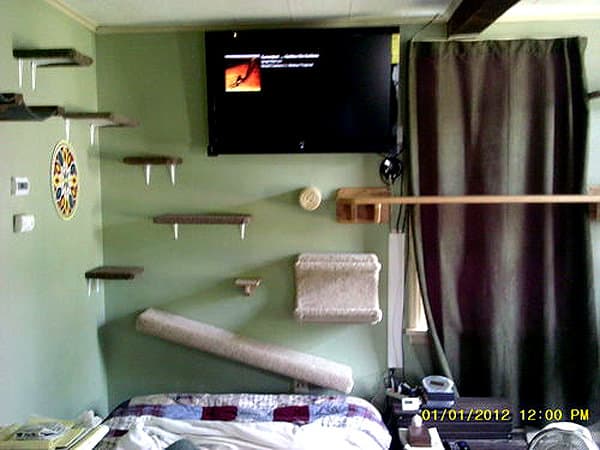
Photo Shared by mickNsnicks2mom
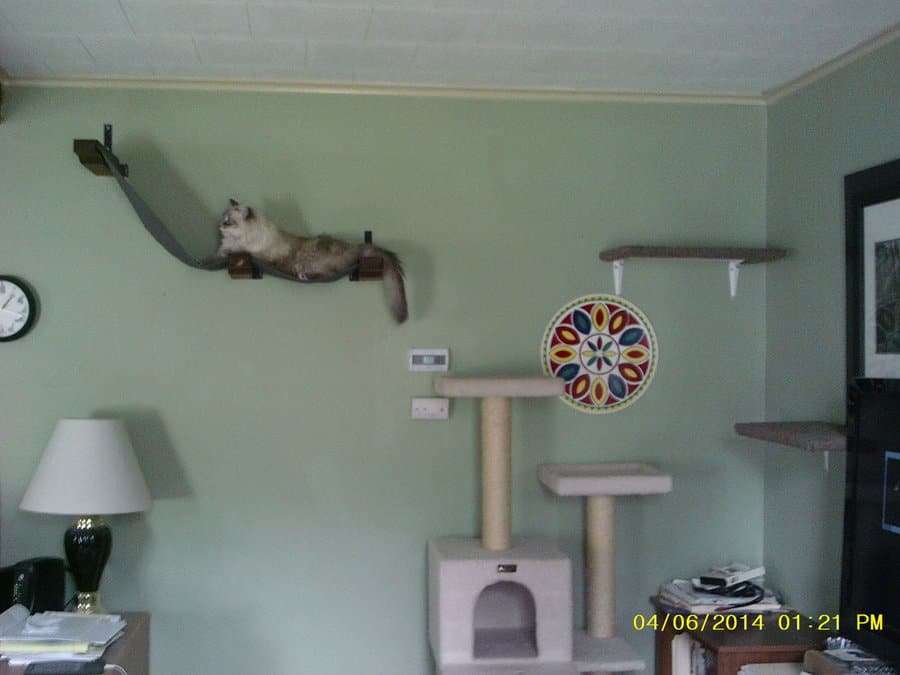
Shared by mickNsnicks2mom
SIGN UP FOR THECATSITE'S EMAIL UPDATES >
Idea #3: Window Perches
How about a shelf with a view? That's what a window perch essentially is. Any window sill that's wide enough and free of clutter will do the job. If you don't have a window sill, you can put up a shelf or even hang a perch from the glass panes.
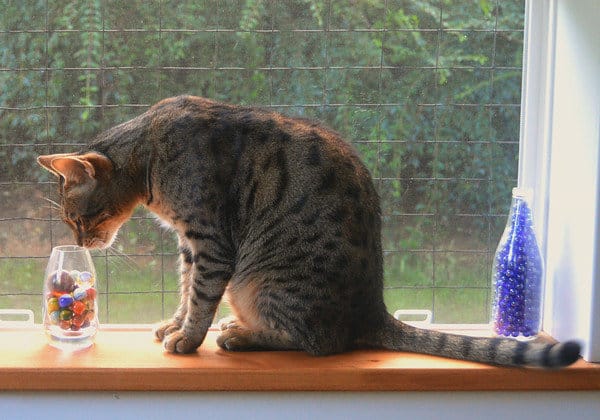
Our member Bengalcatman designed the window sills in his home to be used as cat window perches.
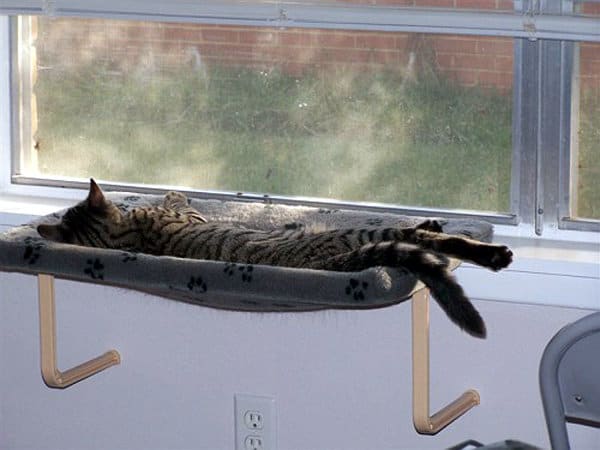
stephanietx installed this "catnapper" as a window perch
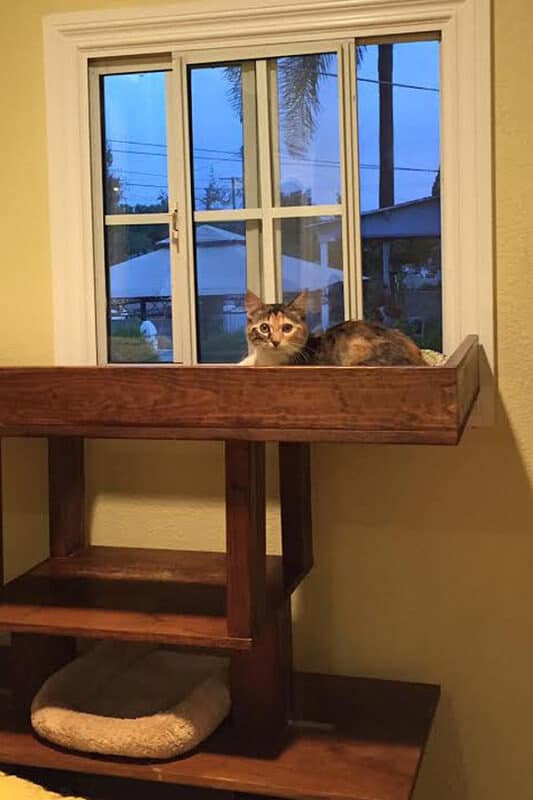
Our member KittyPa combined the concepts of a cat tree with the window perch!
Idea #4: Utilizing Existing Furniture And Fixtures
As you can see from the examples above, creating vertical space for your cat can be done simply by utilizing existing fixtures and fittings in your home.
Encourage your cat to climb on surfaces such as your kitchen table, cupboards, and even the fridge. Unless a surface is dangerous for Kitty - like the kitchen counters and stove - allow and even encourage her to explore that vertical space.
Remember that "up" for cats is just like left and right are for us - directions to be explored and moved across.
Idea #5: Creating A Path
If at all possible, create paths across high surfaces. This can be a series of cat shelves or a combination of a cat tree and the top of your fridge, bridged using a couple of cat shelves.
The idea is to allow your cat to travel across one or more rooms without touching the floor, creating an entirely new level for exploration and exercise.
We hope this article inspires you to add more room for your home's feline residents! More space means more mental and physical stimulation for your cats, leading to reduced stress levels, fewer behavior problems, and better health!
Wrapping It Up: Redefining Space for Our Feline Friends
Transforming your home to cater to your indoor cat's needs may seem challenging initially. But remember, it's about maximizing their physical and mental engagement, not necessarily increasing the square footage.
By understanding your cat's natural instincts and behaviors, such as their need for exercise, territory, and height, you can ingeniously expand their perceived living space. Cat towers, shelves, window perches, and existing furniture can all serve as part of your feline's vertical playground.
Embracing these suggestions will not only create a cat-friendly home but also enhance your furry friend's well-being, adding more fun, stimulation, and ultimately, happiness to their indoor life. Now, isn't that a purr-fect reason to start reimagining their living space?
Let us know what you think by leaving a comment below, and as always, if you have any questions about cat care and behavior, start a thread about it in the cat forums.
SIGN UP FOR THECATSITE'S EMAIL UPDATES >
Note: We may get commissions for purchases made through links on this page.


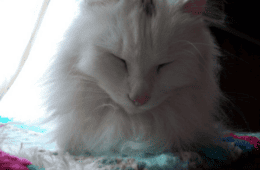

15 comments on “How To Make Your Home Bigger (at Least For Your Cats)”